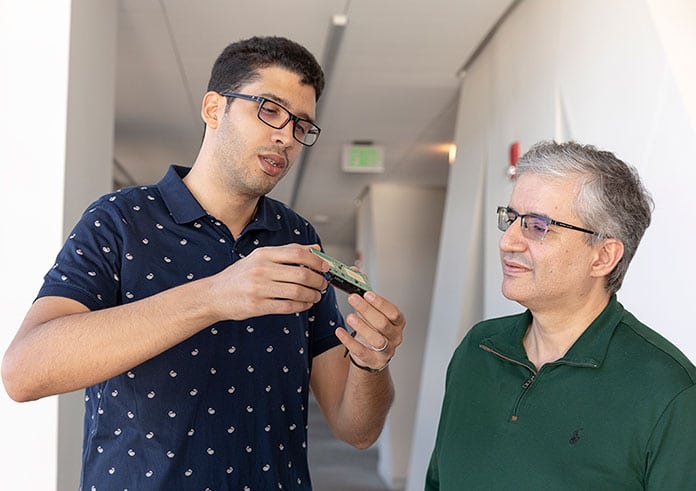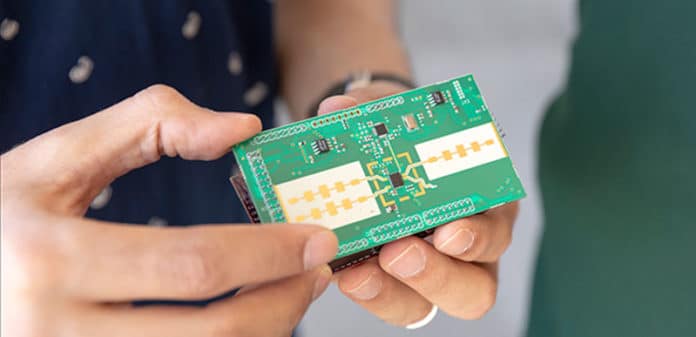Undoubtedly, tiny and lighter electronics are very useful, and they can be used in more ways.
A team of researchers at KAUST has come up with a compact, tiny, portable radar system that could allow visually impaired people or unmanned moving devices to detect objects in real-time.
In collaboration with scientists at the VTT Technical Research Center of Finland, the team created this low-cost radar that provides information about the size, distance, and speed of close-range applications. Such sensors could help visually impaired people, and unmanned moving devices, to see by translating radar reflections into useful information.
It is nearly the size of a matchbox and can also be deployed in drones and other gadgets where portability and low cost are everything.
“Current radar modules are large and bulky. They also lose out on key details because they operate using long radio wavelengths,” says Seifallah Jardak, who worked on the project. “We wanted to develop a low-power, portable radar. Colleagues at VTT brought the necessary experience in millimeter-wave and hardware design while I focused on the signal processing side and developed modular radar software,” explains Jardak.
This yet unnamed device fits into a 10-centimeter box, weighs under 150 grams (5.3 oz), and is powered by a 5 V battery. The prototype is able to detect and track a walking person at 12 meters (39 ft) or up to 20 meters (more than 65 ft).

The team was able to refine the technology to run eight scans per second, up from a single scan every two seconds when the prototype was first built.
Scan frequency becomes crucial in terms of monitoring the real-time situation. The gadget integrates a frequency-modulated continuous wave (FMCW) radar. This implies that radar produces continuous pulses of millimeter-wavelength radio waves, which have a frequency that varies during each pulse. And hence the distance to the object is calculated accurately. A shorter wavelength means a shorter range but more accurate result across the smaller area.
“To limit the size of our system, we chose an operating frequency of 24 Gigahertz. This enabled us to reduce the size of the microstrip antenna,” says Jardak. “Our design also has one transmitting and two receiving antennae, meaning it can better estimate the angular location of a target.”
Well, it’s quite obvious that this radar isn’t powerful enough for large-scale military use, for instance. But undoubtedly, the device will be very useful for persons with vision problems to find their way around or help delivery drones to avoid obstacles as they race toward their targets. It could also be used in health care, for monitoring vital signs, or even as part of a home security setup.
“Our prototype may also be useful for unmanned robotic and quadcopter applications where a collision avoidance system is required,” adds Jardak.
The KAUST team worked on the project under the supervision of Sajid Ahmed and Mohamed-Slim Alouini from KAUST and along with Tero Kiuru and Mikko Metso from VTT.
